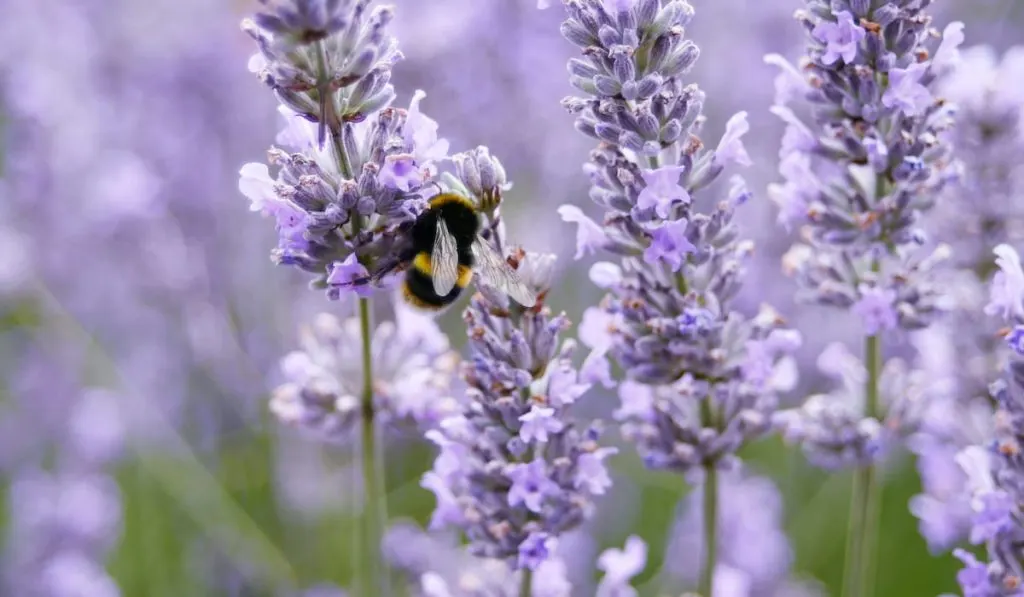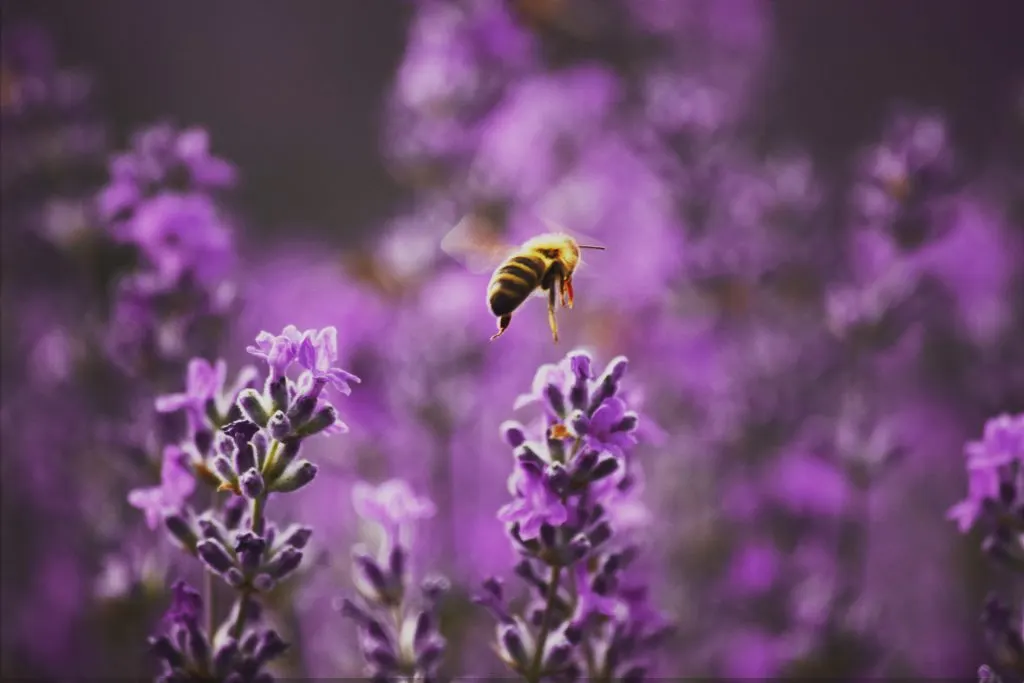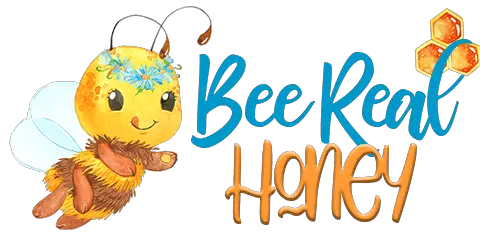*This post may have affiliate links, which means I may receive commissions if you choose to purchase through links I provide (at no extra cost to you). As an Amazon Associate I earn from qualifying purchases. Please read my disclaimer for additional details..
Lavender has long used for medicinal purposes, or making perfumes and teas. But did you know lavender is equally important bees? Lavender is the bee’s favorite plant.
You must have noticed how greatly bees are attracted to lavender. Its fragrance and color not only attract humans but bees also.

Table of Contents
Why Do Bees Like Lavender?
We love lavender for its color and sweet fragrance but have you ever thought about why bees like them?
Bees are attracted by this beautiful flower because of its aroma and color but the main reason behind their recurrent visit is something else. Bees visit flowers to collect the nectar that is utilized in making honey.
The flowers rich in nectar are most visited by bees. Lavender is very rich in nectar and its color and fragrance adds to the attraction.
While collecting nectar, bees also help the pollination process. On their hunt for nectar, pollen gets attached to their body and travels with them to other flowers.
In addition to nectar, lavender is also rich in pollen. So lavender not only provides nectar to the bees but also helps gardeners in pollination.

Does The Color Of The Lavender Matter?
Bees do not see colors as we see. They color vision that is five times faster than humans.
Bees can swiftly detect flowers in a huge area, unlike other animals and they have excellent color detection as compared to other insects. They are attracted to different colors than humans.
The colors bees mostly get attracted to include purple, violet, and blue and naturally, all these shades are present in lavender. This makes Lavender the most favorite plant of bees.
Its striking color plays a very major role in attracting pollinators like bees.

Which Lavender Varieties Lead To The Best Tasting Honey?
After a lot of hard work and effort, bees produce honey from the nectar they collect from flowers. The nectar and the type of bee will determine the nature of honey produced.
All flower plants have unique chemistry of nectar which leads to a different tasting product —honey.
The best flower plants for the production of honey are dandelion, fennel, and lavender. Growing these plants in great numbers will positively affect the quality of honey being produced.
The lavender varieties leading to the best tasting honey are English Lavender, Italian Lavender, and Hybrid Lavender.
These types produce delicious honey with a mild scent of lavender, without any acidity or bitterness.

Do All Bees Like Lavender?
Lavender is one of the favorite flower plants of bees.
But not all bees love lavender equally. Some morphological factors that vary within species make it more likable for some bee types as compared to the others.
Lavender is more popular in bumble bees than in honey bees. The reason behind it is some morphological differences. The lavender plant has tubular flowers which require the bees to push their heads a little further into the flower.
In this case bumblebees are better adapted to Lavender than honey bees. They have longer tongues than honey bees. This requires less time and effort for the bee to suck nectar from one flower and move to the other in very little time.
3 Best Lavender Varieties for Bees
All lavender plants are not the same. You will need the right variety to get the most bees coming to visit. Here are the top 3 lavender types your bees will simply love.
English Lavender (lavandula angustifolia)

English Lavender is a beautiful plant with brightly colored and aromatic flowers. Bees can locate their bright color easily from far away.
The major reason bees loving English lavender is the time it flowers—the midsummer gap.
This is the time the bee colonies are the biggest which means more food is required. These fresh English lavenders become an important source of nectar for the hungry bees.
English lavender blooms are tightly grouped. This produces more sites of nectar collection without unnecessary airgaps.
Lavandula angustifolia is a fairly hardy species. It can withstand harsh conditions like extreme cold and drought. Its tough nature makes it more popular among insects looking for food.
Other than bees it attracts other pollinators like butterflies as well.
Italian Lavender (Lavandula stoechas)

Italian Lavender has beautiful greyish leaves with striking purple/blue flowers at the top.
They can be easily grown in small gardens and courtyards and their color attracts bees and other pollinators very easily.
Its maximum growth is 19 inches high and 19 inches wide. It can easily survive in containers and pots as well.
They do require proper maintenance. You can prune the dead flowers to promote growth.
They are not that tough as compared to the English Lavender but can still withstand short periods of dryness. They can also tolerate more humidity than other species.
They also bloom during the midsummer gap and attract more bees than any other plant.
Bees can easily suck nectar from the flowers. Italian Lavender makes delicious honey. The honey is very sweet with a mild scent of lavender.
Lavender Hybrid (lavandula x intermedia)

A hybrid cross between the English lavender and Portuguese lavender, lavender Hybrid is one of the most suitable lavender types for bees.
They have large greyish leaves with purple flowers. They are less hardy as compared to the other types. But their growth in terms of size and flower spikes is comparatively more. This makes it a more desired type.
This type of lavender blooms a little late i.e. from July to September so if you add this type to your garden, bees can have lavender available for most of the time of the year.
It produces medium sweet honey, without bitterness or acidity.
Also known as lavandins, these hybrids are rich in essential oils. Their highly flavorful flowers are used as condiments as well. Rich in nectar and honey, lavandins are both important for the bees and pollination.
